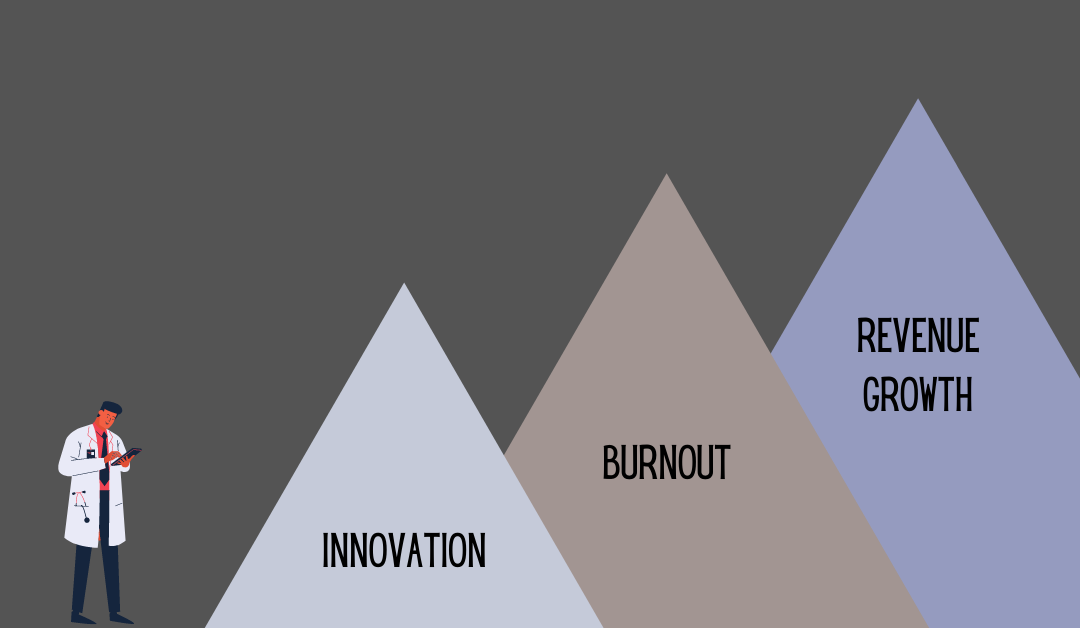(Last updated 1/17/2024)
The healthcare industry is full of challenges even in normal times. The COVID-19 pandemic has only added more challenges to the long list facing healthcare professionals every day. Fortunately, new healthcare tech is always cropping up to help overcome these challenges. Sometimes, though, new tech can create new challenges. In this blog, we’ll look at some of the biggest healthcare challenges, from ongoing healthcare innovation to revenue growth, and some healthcare tech solutions that can help address those challenges.
Challenge #1: Healthcare Innovation
One of the biggest challenges facing healthcare leaders is staying ahead of the innovation curve. The world as a whole continues to make leaps and bounds in regards to technological innovation, from drone deliveries to self-driving vehicles. Patients expect the same level of innovation from healthcare providers. More innovation leads to better care.
Healthcare Innovation Solutions
Healthcare innovation comes in many forms. When it comes to selecting innovative healthcare solutions, look for tech that does one or more of the following:
- Allows for new procedures and revenue streams
- Improves the patient experience
- Improves patient safety
- Reduces clinical workflows and improves efficiency
Healthcare innovation comes in many forms. One area in particular that is ripe for innovation is patient access. Solutions that make it easier for patients to securely access and share their medical records, like Novarad’s award-winning cloud-based image sharing solution CryptoChart, help improve the patient experience and reduce staff workloads.
Patient access solutions are just one example of innovative healthcare tech. Other innovative solutions to consider include:
- Clinical Decision Support Mechanisms
- Remote monitoring tech
- Telehealth/Telemedicine solutions
Challenge #2: Clinician Burnout
Clinician burnout is a serious problem experienced by 42% of physicians according to a recent Medscape survey. In addition to the physical and mental effects burnout has on clinicians themselves, it can also cost providers millions every year. We recently wrote about how to improve physician mental health and well-being. Now, let’s look at specifically how tech can overcome challenges associated with burnout.
Clinician Burnout Solutions
Tech plays a significant role in clinician burnout, in both good ways and bad. While some technologies reduce burnout by reducing workflows, other tech, such as EHR’s, can actually increase workflows and worsen burnout. Another factor is the timing of implementing new tech solutions. While the solution itself may make clinicians’ work easier, implementing it during busy or stressful times may increase feelings of burnout. A recent study conducted by HIMSS and Nuance Communications found that clinician stress levels rose as a result of being tasked with learning new tech skills and work processes during the pandemic.
While untimely implementation can exacerbate burnout, interviewees in the aforementioned study did say that one category of solutions in particular could improve their jobs: AI-based documentation solutions. These types of solutions can help reduce burnout and improve working conditions by:
- Highlighting aspects of the patient record
- Increasing patient safety
- Reducing workflows
So while implementing new and innovative healthcare solutions is typically a good idea, it’s important to consider the effect each solution will have on the clinicians using it. After deciding that a solution will have a positive effect on clinicians, choose an implementation timeframe that works for them as well.
Challenge #3: Revenue Growth
Revenue growth was a particular challenge for providers the past several years as a result of the pandemic, but even in normal times, hospitals are always looking to grow revenues. We recently discussed 6 ways to recover revenue losses and stop the leaks. Now, let’s look into some tech solutions that can aid in revenue growth efforts.
Revenue Growth Solutions
Overcoming the first challenge we discussed, healthcare innovation, can also help with revenue growth challenges. In fact, according to recent research by Auburn University published in the Journal of the Association for Information Systems, implementing one new clinical IT system and one new business IT system can increase annual net patient care revenue by an average of $1.7 million. Health IT innovation can lead to:
- Expanded healthcare service offerings
- Greater efficiency
- Patient loyalty
- Reduced costs/downtime & more
All of these can help boost the bottom line. Another way to boost revenues is to invest in solutions that improve ambulatory services and referrals. In a recent Becker’s Healthcare article on new C-suite positions in healthcare, Todd Drometer, lead executive partner in AMN Healthcare’s executive search practice singled out ambulatory services as a key area for revenue growth.
“So, if a health system is unable to grow through acquisition, the only way they’re able to grow their net revenue in a profitable way — if they do it right — is through ambulatory expansion.”
Todd Drometer, Lead Executive Partner, AMN Healthcare
A recent article published by the Healthcare Financial Management Association (HFMA) discussed how physician-friendly technology can help grow ambulatory referrals. The article outlined three common reasons hospitals miss out on ambulatory orders:
- insurance claim denials
- scheduling issues/no-shows, and
- improper patient preparation/instruction
These issues can all be addressed through technology. For instance, using a clinical decision support mechanism (qCDSM) can ensure ambulatory orders meet the appropriate use criteria (AUC) and PAMA regulations, eliminating claim denials. Providing patients with notifications and reminders can reduce scheduling hiccups and no-shows. Finally, providing patients with instruction videos can help prepare them for their procedures, reducing the need for rescheduling due to the patient not being properly prepared the day of the exam or procedure.
The HFMA article also stressed the need for technology to make it easy for referring physicians and patients to do business with the facility. Keys to accomplishing this are:
- Easy referral process
- Complete order transparency
- Quick report turnaround
Finding the Right Tech
Three of the top challenges in healthcare today are:
- Healthcare innovation
- Clinician burnout
- Revenue growth
At iPro, we’re here to help healthcare leaders overcome these challenges with the right tech. We offer one such solution through our Novarad South division: CryptoChart cloud-based image sharing.

Named MedTech Breakthrough’s “Best New Radiology Solution” for 2020, CryptoChart™ is the cloud-based medical imaging solution you can use to safely and efficiently provide patient medical images and records using a simple, yet highly secure CryptoChart code. With that code, your patients can access their images anytime, anywhere, and easily share them by sending a text message or email. This also eliminates the use of CD’s and DVD’s, resulting in cost savings for your facility.
To learn more about CryptoChart, request a free live demo today.




